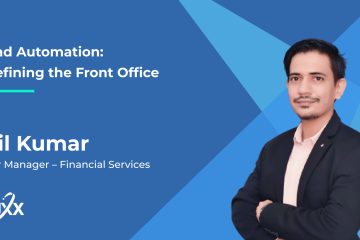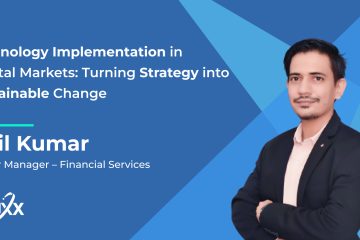A recent Broadridge survey highlights that 70% of financial firms see legacy technology as a significant barrier to digital transformation. Traditional brokerages, still tied to outdated on-premise systems, face obstacles to growth, scalability, and responsiveness to customer demands. This technical debt not only leads to high maintenance costs but also prevents firms from seizing new opportunities.
FinTech disruptors like Robinhood are setting new industry standards with innovations such as cash sweep programs, instant deposits, and fractional share trading. This compels traditional brokerages to modernize and rethink their business models and use of legacy technology. Embracing digital transformation is essential for these firms to stay competitive and expand their core competencies.
Modernizing Financial Firms: Overcoming Legacy Barriers
Clients today do not care about the underlying technology their brokerage uses, but they do care about the performance, reliability, and convenience it offers. Any hiccup—slow transaction processing, system downtimes, or security vulnerabilities—can lead to a loss of trust and eventually drive clients away. Therefore, brokerage firms dealing with outdated legacy systems typically face three strategic options:
1. Replacement with a New In-House Solution
This “big bang” or “rip and replace” approach involves a complete switch to a new system. It’s a high-stakes endeavor, fraught with risks and complexities, especially when existing systems are deeply entrenched in operations.
Opt for this strategy when outdated technologies significantly undercut competitive edge, maintenance costs spiral out of control, or skilled personnel to manage aging infrastructure become scarce.
2. Minor Enhancements to Existing Systems
This approach involves bolting existing legacy technology systems and deploying wraparound service layers using low-cost tools (RPA) to reduce overheads. It’s a temporary fix to squeeze a few more years out of legacy infrastructure.
While clever, it’s not viable long-term as cracks start appearing, especially in post-trade settlement processes. Technological agility is crucial for competing in a data-driven, high-volume, and customer-centric market.
3. Partnering with a Domain Solutions Expert for Integrations:
A more flexible, low-risk solution involves partnering with a technology partner with strong industry expertise. Even if core technology is replaced, it is done in iterative phases.
Building new modules on microservices architecture ensures a steady growth of the new core, which can then be transferred over in a less disruptive fashion. This allows the brokerage to focus on strategic tasks, ensuring near-term cost reduction and alignment with the modernization strategy.
This approach lets the brokerage focus on more important strategic tasks, such as developing a product roadmap for customer-facing features alongside modernization, ensuring the primary objective of near-term cost reduction is met.
At Ionixx, we recently worked with a leading Wall Street broker to move their middle-office operations to cloud-based systems. This upgrade enabled real-time data handling and supported a phased transition from batch processing to straight-through processing (STP). The upgrade was essential for same-day trade confirmation, allocation, and affirmation, setting the stage for T+1 settlement and reg compliance.
Opting for a modular approach with a microservices architecture, we avoided the risks of a full legacy system overhaul. This phased, incremental modernization reduced downtime, cut operational costs by 25%, and provided the flexibility needed for future scalability and adaptation.
No One-Size-Fits-All Approach
Large brokerages find it difficult to begin legacy modernizations due to nebulous ROI. As a result, minor enhancements to existing systems while producing more features are the most common approach. However, these incremental upgrades often only provide temporary relief and can mask deeper systemic issues.
For long-term success, brokerage firms should consider a strategic blend of enhancements and phased modernization. This approach allows firms to leverage current infrastructure while gradually integrating more advanced technologies. By working with a custom provider, brokerages can ensure solutions are tailored to their needs, allowing for frequent, incremental technology implementations.
This not only helps in managing costs and risks but also positions brokerages to quickly adapt to industry changes. In a rapidly evolving market, having a flexible and modern infrastructure becomes a core survival metric, providing a competitive edge and easy scalability for clients of all sizes.


